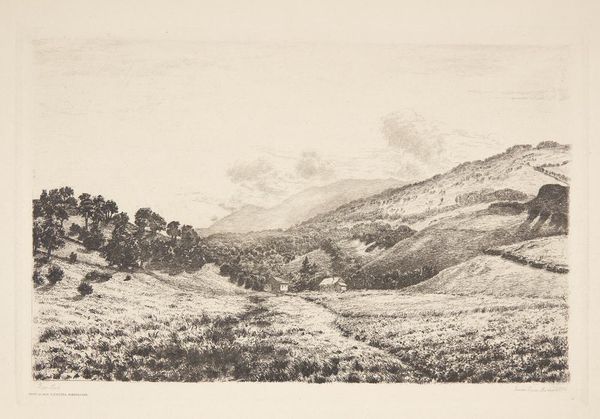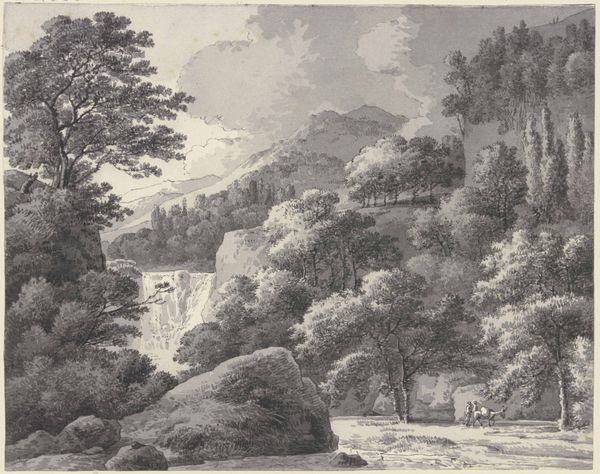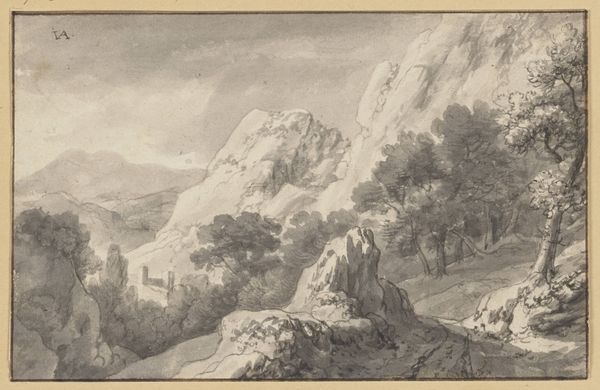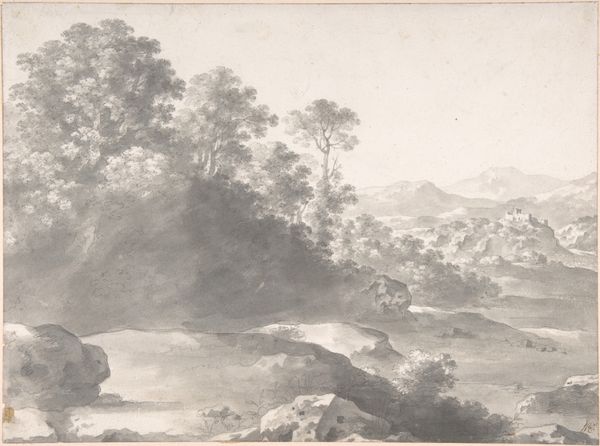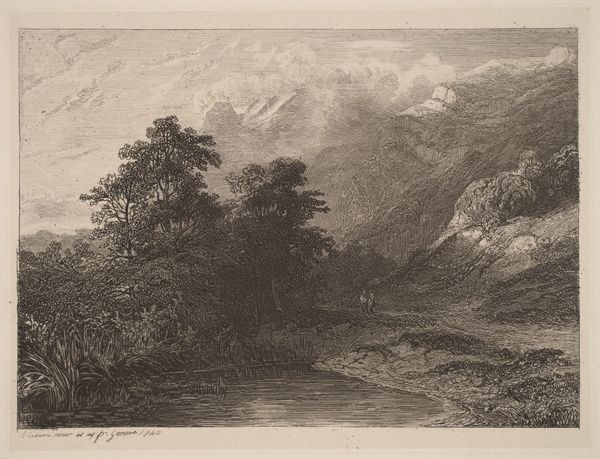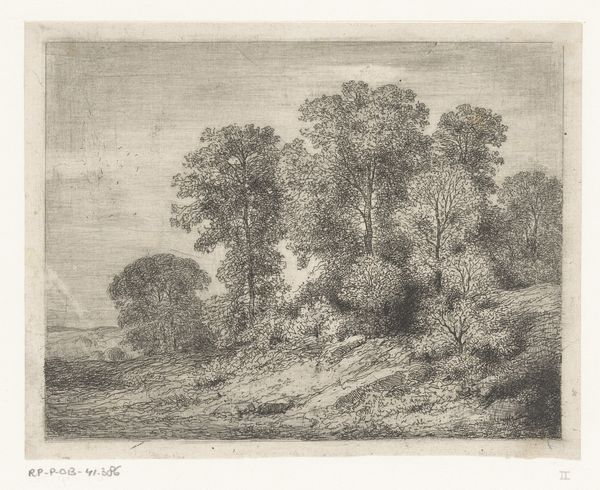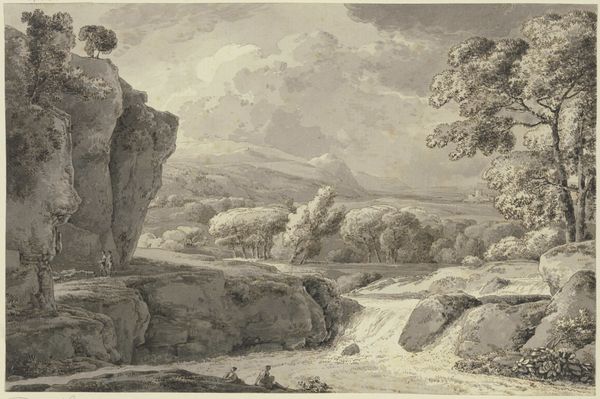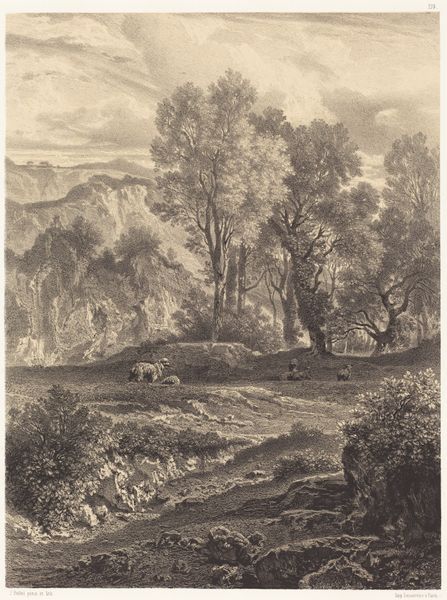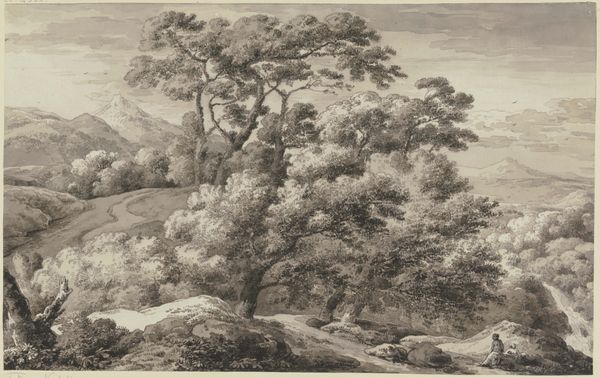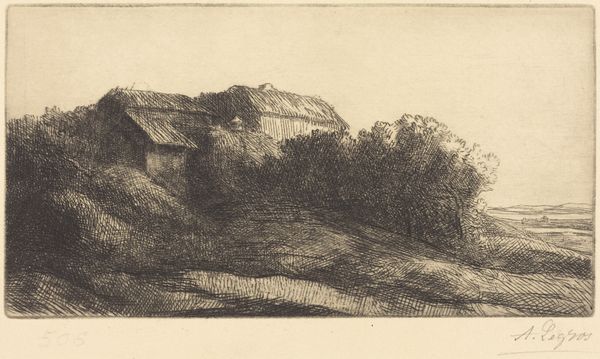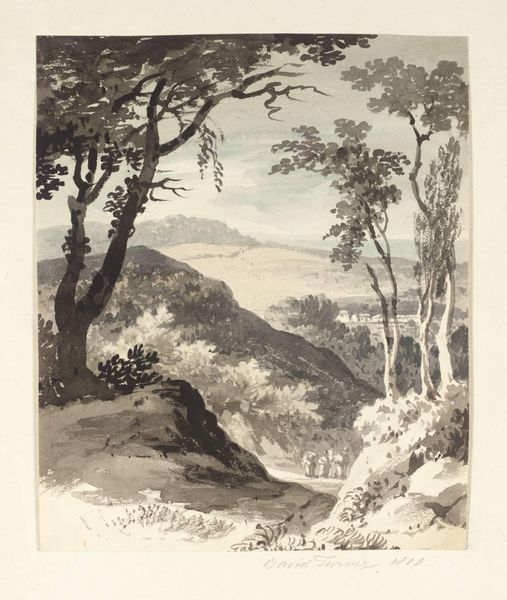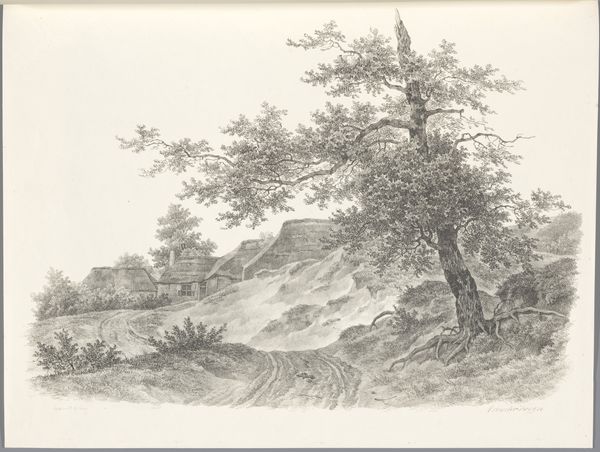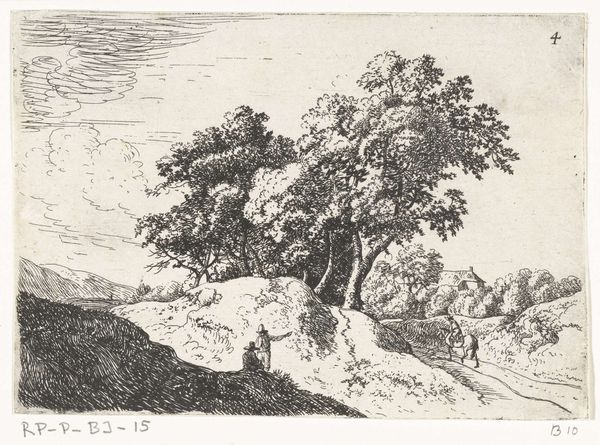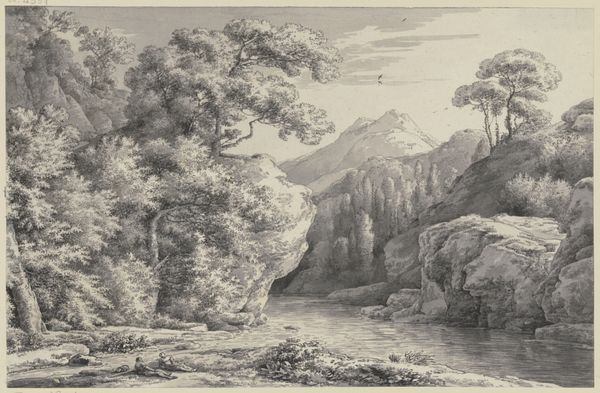
drawing, etching, woodcut
#
drawing
#
etching
#
landscape
#
rock
#
pencil drawing
#
forest
#
woodcut
#
northern-renaissance
Dimensions: height 255 mm, width 364 mm
Copyright: Rijks Museum: Open Domain
Curator: This landscape print, titled "Heuvelachtig landschap met wandelaar," was created by Martinus Antonius Kuytenbrouwer Jr. sometime between 1831 and 1897. It employs techniques of etching, drawing and woodcut. Editor: The meticulous detail and composition create a captivating scene; it almost feels as though a somber moment is being shared. Curator: Indeed, that feeling is amplified by its historical context, coming at a time when industrialization across Europe was shifting how people related to nature. This sort of image, imbued with romantic ideals of solitary connection with nature, can be seen as a counter-narrative to capitalist exploitation. Who gets to experience the 'sublime' wilderness is, after all, always a political question. Editor: I find the deployment of visual forms here intriguing, especially the relationship between foreground and background. The use of hatching and cross-hatching articulates textures that gives great clarity. The rocky face to the right—a marvelously worked textural passage. I wonder what one may surmise by applying a structuralist interpretation to its composition? Curator: Well, when thinking about structuralism, it's essential to ask how the print functions as a signifier, contributing to broader ideological structures related to landscape and identity. Notice how the single walker becomes representative, embodying themes of human versus the untamed landscape. The figure's solitary state suggests something akin to isolation that becomes more apparent with each passing year into the artist's life. Editor: You’re making me see those tensions so clearly! Curator: And this also connects to other broader social anxieties of the period; such works can become interesting avenues for looking at race and gender during periods of rapid socio-economic transformation. Editor: It’s true that paying attention to that broader cultural context reframes how one looks at an individual and their subjective experiences in a space like this. It challenges the singular reading of nature. Thanks for this dialogue! Curator: It works both ways; thank you for prompting new ideas. Hopefully, it offered you and our listeners fresh pathways into viewing the image today!
Comments
No comments
Be the first to comment and join the conversation on the ultimate creative platform.
